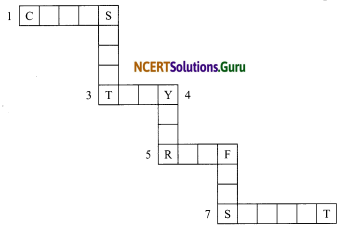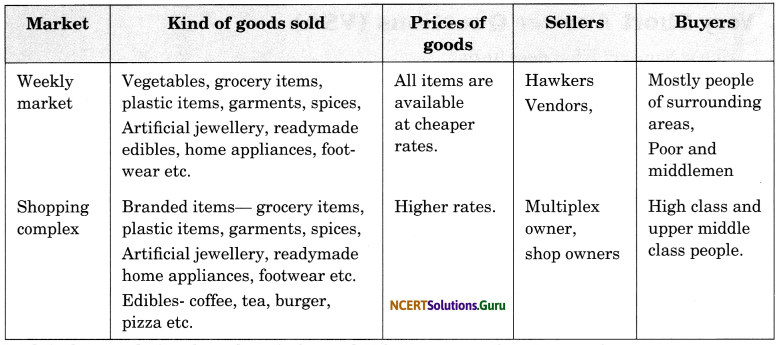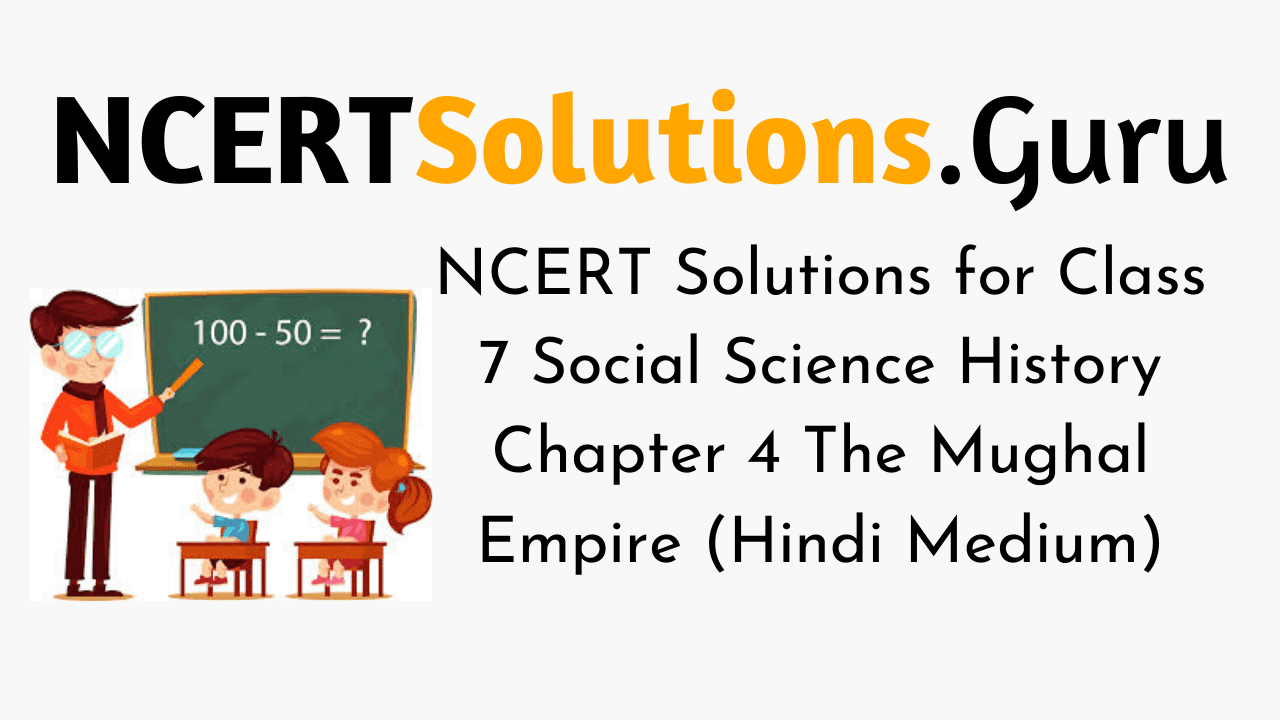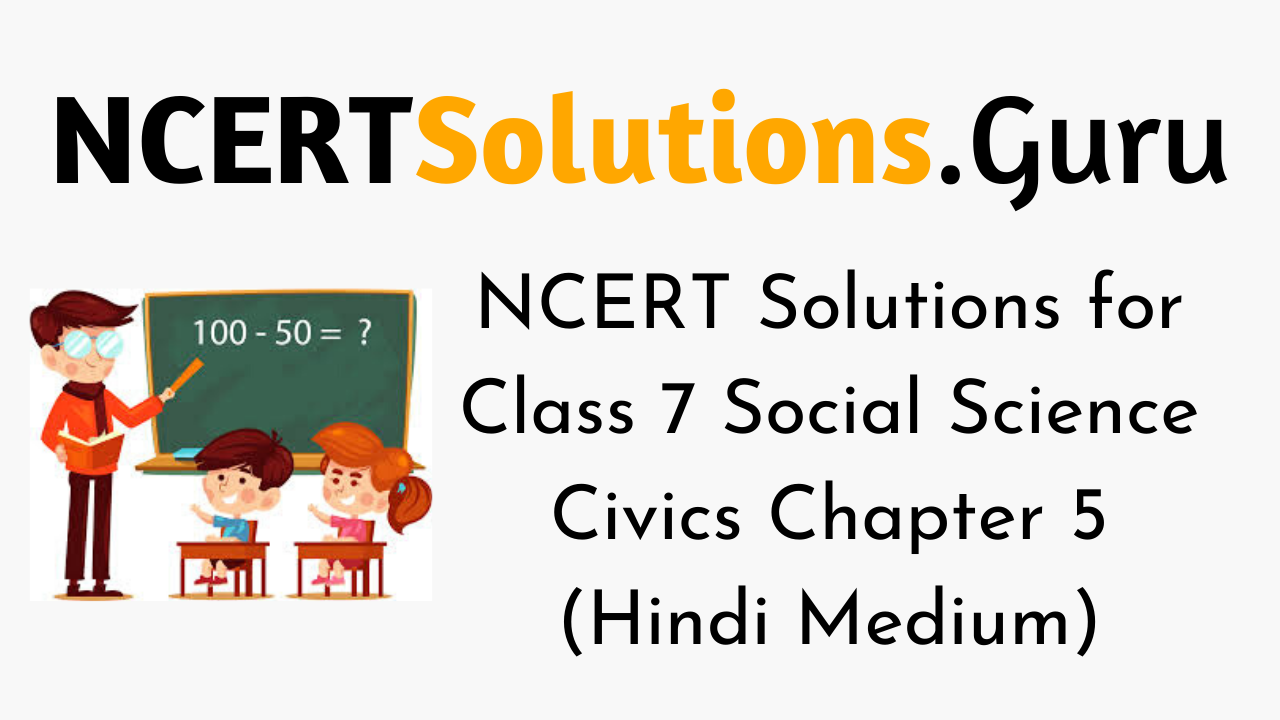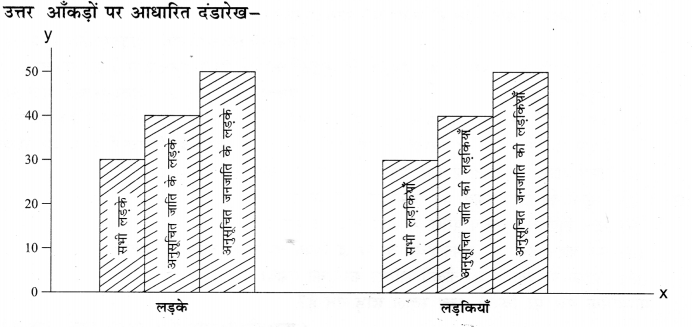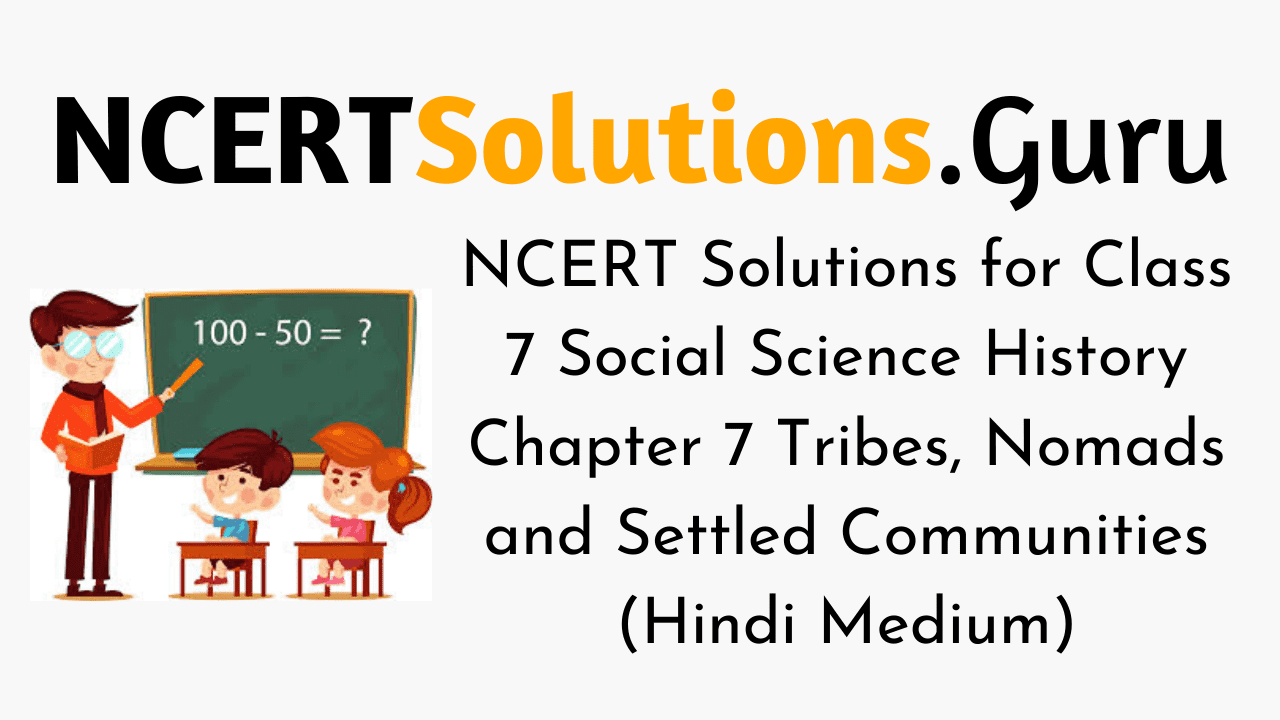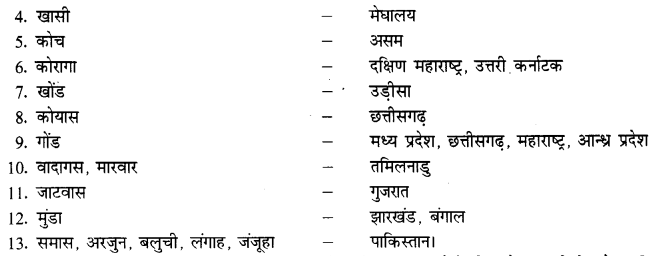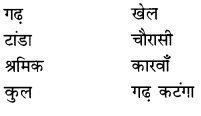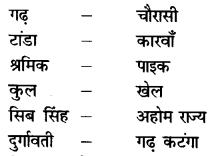NCERT Solutions for Class 7 English
The Story of Cricket NCERT Solutions for Class 7 English Honeycomb Chapter 10
The Story of Cricket NCERT Text Book Questions and Answers
The Story of Cricket Comprehension check-I
Question 1.
Cricket is originally a/an
i. Indian game.
ii. British game.
iii. international game.
Mark the right answer.
Answer:
ii. British game.
Question 2.
“There is a historical reason behind both these oddities. ” In the preceding two paragraphs, find two words/phrases that mean the same as ‘oddities ’.
Answer:
The two words/phrases that mean the same as ‘oddities’ are ‘peculiarities’ and ‘curious characteristic’.

Question 3.
How is a cricket bat different from a hockey stick?
Answer:
Hockey-sticks curve outwards at the bottom, and till the early eighteenth century, this was the case with bats as well. However, later, the curved bat was replaced with the straight one. A bat is relatively thicker than a hockey stick and does not curve at the bottom. It is also wider than a hockey stick. A bat comprises of two parts—the blade and the handle.
The Story of Cricket Comprehension check-II
Write True or False against each of the following sentences.
- India joined the world of Test cricket before Independence. True
- The colonizers did nothing to encourage the Parsis in playing cricket. True
- Palwankar Baloo was India s first Test captain. False
- Australia played its first Test against England as a sovereign nation. False
The Story of Cricket Comprehension check-III
Question 1.
A ‘professional’ cricket player is one who makes a living by playing cricket. Find the opposite of ‘professional ’ in the last paragraph.
Answer:
Amateur
Question 2.
In “the triumph of the one-day game”, ‘triumph’means the one-day game’s
i. superiority to Test cricket.
ii. inferiority to Test cricket.
iii. achievement and success over Test cricket.
iv. popularity among viewers.
Mark the right answer.
Answer:
iv. popularity among viewers.

Question 3.
“…the men for whom the world is a stage ”.
i. It refers to the famous cricket fields in the world.
ii. It means that there are many cricket playing countries in the world.
iii. It implies that cricketers are like actors and every cricket ground is like a stage on which the drama of cricket is enacted the world over.
Mark the right answer.
Answer:
iii. It implies that cricketers are like actors and every cricket ground is like a stage on which the drama of cricket is enacted the world over.
The Story of Cricket Working with the text
Question 1.
Name some stick-and-ball games that you have witnessed or heard of.
Answer:
Some stick-and-ball games that I know of include hockey, baseball, cricket and polo.
Question 2.
The Parsis were the first Indian community to take to cricket. Why?
Answer:
The Parsis were the first Indian community to take to cricket because they were brought into close contact with the British because of their interest in trade and were also the first Indian community to westernize. They founded the first Indian cricket club, the Oriental Cricket Club, in Bombay in 1848.
Question 3.
The rivalry between the Parsis and the Bombay Gymkhana had a happy ending for the former. What does ‘a happy ending’refer to?
Answer:
The happy ending referred to here is that the Parsi team beat the Bombay Gymkhana at cricket in 1889, just four years after the foundation of the Indian National Congress in 1885, an organisation that was lucky to have amongst its early leaders the great Parsi statesman and intellectual Dadabhai Naoroji.

Question 4.
Do you think cricket owes its present popularity to television? Justify your answer.
Answer:
Yes, cricket owes its present popularity to television. It expanded the audience for the game by beaming cricket into small towns and villages. It also broadened cricket social base.
Children who had never previously had the chance to watch international cricket because they lived outside the big cities, could now watch and learn by imitating their heroes. The technology of satellite television and the world-wide reach of multi-national television companies created a global market for cricket.
Question 5.
Why has cricket a large viewership in India, not in China or Russia?
Answer:
India has the largest viewership for the game amongst the cricket-playing nations because the game enjoys a lot of prestige and honour. It is one game that brings the people of all regions together. It is a uniting factor, in that sense. Cricket is hugely popular in India and is played at grassroot level.
Besides, there have been countless stories of cricketers who have come from poor backgrounds but have made a name for themselves in the field of cricket. It is not the same in countries like Russia and China, where other sports are more popular than cricket.
Question 6.
What do you understand by the game’s (cricket) ‘equipment ’?
Answer:
The equipment needed to play cricket include a bat, a ball, gloves, helmets, stumps and pads. Cricket’s most important tools are all made of natural, preindustrial materials. The bat is made with leather, twine and cork. Even today both bat and ball are handmade, not industrially manufactured. The material of the bat changed slightly over time.
Once it was cut out of a single piece of wood. Now it consists of two pieces, the blade which is made out of the wood of the willow tree and the handle which is made out of cane. The gloves and pads are made of vulcanized rubber, and the helmets are made out of metal and synthetic lightweight materials.

Question 7.
How is Test cricket a unique game in many ways?
Answer:
Test cricket is a unique game in many ways because a test match can go on for five days and still end in a draw. No other modem team sport takes even half as much time to complete.
Question 8.
How is cricket different from other team games?
Answer:
A cricket match is different from other team games because a match can take five days to be completed, and still end in a draw. No other modem team sport takes even half as much time to complete. A football match is generally over in an hour-and-a-half. Even baseball completes nine innings in less than half the time that it takes to play a limited-overs match.
Another curious characteristic of cricket is that the length of the pitch is specified — 22 yards — but the size or shape of the ground is not. Most other team sports, such as, hockey and football lay down the dimensions of the playing area. Cricket does not. Grounds can be oval or nearly circular. This is not the case in other sports, where the size and shape of a ground is always fixed.
Question 9.
How have advances in technology affected the game of cricket?
Answer:
In the matter of protective equipment, cricket has been influenced by technological change. The invention of vulcanized rubber led to the introduction of pads in 1848 and protective gloves soon afterwards. The modem game would be unimaginable without helmets made out of metal and synthetic lightweight materials.

Question 10.
Explain how cricket changed with changing times and yet remained unchanged in some ways.
Answer:
As far as the rules are concerned, a lot of changes have characterized cricket. The bats used to be shaped like a hockey stick, and players used to bowl underarm. It is no longer an elite sport that it started out to be. However, we can say that in many ways it has also remained unchanged. The cricket equipment has not undergone a lot of change. Cricket’s most important tools are still made of natural, pre-industrial materials. The bat is made with leather, twine and cork. Even today, both bat and ball are handmade, not industrially manufactured. Unlike golf and tennis, cricket has refused to remake its tools with industrial or man-made materials such as plastic, fibreglass and metal.
However, in the matter of protective equipment, cricket has been influenced by technological change. The invention of vulcanized rubbber led to the introduction of pads in 1848 and protective gloves soon afterwards. The modem game is unimaginable without helmets made out of metal and synthetic lightweight materials.
The Story of Cricket Working with language
Question 1.
Word search
- Twelve words associated with cricket are hidden in this grid.
- Six can be found horizontally and the remaining six vertically.
- Two words have been found for you.
Solved
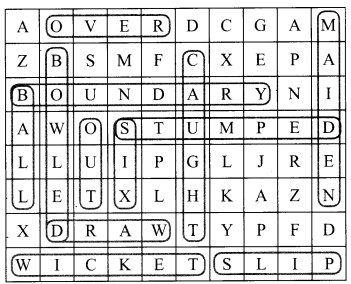

Question 2.
Add -ly to the italicized word in each sentence. Rewrite the sentence using the new word. See the examples first.
i. It is obvious that the work has not been done in a proper way.
It is obvious that the work has not been done properly.
ii. He made the statement in a firm manner.
He made the statement firmly.
iii. The job can be completed within a week in an easy way.
The job can be completed within a week easily.
iv. You did not play in a serious manner, or else you would have won the match.
You did not play seriously, or else you would have won the match.
v. She recited the poem in a cheerful manner.
She recited the poem cheerfully.
Question 3.
Use the following phrases appropriately in place of the italicized words in the sentences given below.
i. Actually, I didn’t intend to come to your place. I reached here without planning.
Actually, I didn’t intend to come to your place. I reached here by accident.
ii. Sunil, there’s a letter for you in today’s post. There’s one for me also.
Sunil, there’s a letter for you in today’s post. There’s one for me as well.
iii. Everybody thought I had composed the poem. The truth is my younger sister did it.
Everybody thought I had composed the poem. As a matter of fact, my younger sister did it.
iv. The doctor told the patient to make sure that he took his pills on time.
The doctor told the patient to see to it that he took his pills on time.
v. It will be better for us to plan our trip before setting out.
We had better plan our trip before setting out.
The Story of Cricket Speaking and writing
Question 1.
Complete each of the following words using gh, ff or f Then say each word clearly after your teacher.
(Encourage the students to say each word clearly.)
Answer:
- effort
- fact
- confess
- laughing
- enough
- half
- scruff
- rough
- stiffly
- difference
- safety
- flush

Question 2.
Write two paragraphs describing a bus ride to watch a cricket match in a village. Use the following points. Add some of your own. (Encourage the students to use their creativity and formulate their answers.)
Answer:
My friends and I wanted to go to a farway village to watch a cricket match. It was a two-hour long journey. My mother was more than glad to send me away for a few hours with our neigbours, the Sharmas and their children, to watch the match. I guess it is tiring for her to look after all of us every day, and she could use a break.
So, I was ready to go. However, at the last minute, their car broke down. Fixing it would have meant that we would miss the first innings of the match. After all, everybody was going to the village that day. So, we all decided to take the bus instead. It would be another kind of adventure for us. We went to the bus stop and were not expecting the old, rickety and crowded bus staring down at us.
However, I was so looking forward to spending this time with my friends. So, I didn’t think much about it. But with every stop, more and more people boarded the bus, and there was hardly any room to stand or breathe. Nonethessless,
I was enjoying the views outside. And the passengers were also very friendly. They were all going to see the match. They were discussing the players and the pitch, and placing bets on who was going to win today. I was happy to join in and share my opinion.
We reached the venue of thematch quite tired with the journey. But we did not want to spoil our trip so easily. We had come to watch the match, and the match we will see. It was between two villages, and the players all looked robust and in good shape. What caught my attention were the makeshift stumps, rough pitch and a rubber ball. Nonetheless, the match was enjoyable, and we were cheering for our favourite team and players. In the end, our team won.
But I was not ready for another trip in the bus. So, we all decided that it would be better to get a taxi from there. In the comfort of the taxi, I remembered how tiring the bus journey was, but the friendly passengers and the lovely views did make up for all the trouble we faced on the trip.
![]()
![]()
![]()

